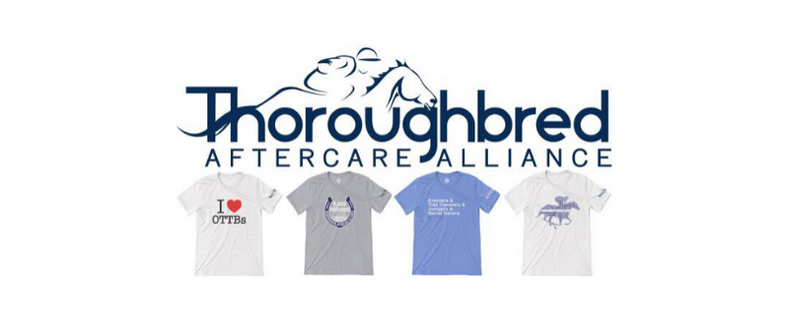Evolution of Thoroughbred Aftercare Alliance

When news broke early this decade of poor situations for multiple retired racehorses, concerned horsemen came together to create the Thoroughbred Aftercare Alliance (TAA) to raise the standard of racehorse aftercare.
Organized by Jack Wolf of Starlight Racing, the first meeting to start the process of creating the TAA took place during Belmont Stakes weekend in 2011 with the group then meeting again at Keeneland that fall. In February 2012, the creation of TAA was announced with some major names in racing taking part in supporting its early efforts.
CLICK HERE TO PURCHASE TAA TEES
“We got instant seed money support from The Jockey Club, from Keeneland, from Breeder’s Cup and that helped us get off the ground,” TAA President Mike Meuser said about the formation of the alliance.
“I think the other thing that was very important to us at that early stage was that we got some in-kind contributions from The Jockey Club as well. We have office space in their building, we were able to share some accounting services, and those things that were done on the front end really put us in the position to start going to various sectors of the industry and finding ways to create an ongoing network of support from everyone who participates in Thoroughbred racing and breeding.”
While it was supported by some of the biggest owners, breeders, tracks, and auction houses in North America, the TAA did see some hesitation from parts of the racing industry. While other industry organizations and charities had supported aftercare efforts as part of their funding, there had not yet been an industry organization focused fully on aftercare.
“I think the challenge with the formation was certainly to get people to commit to the concept of an organization that would have a very narrow focus in aftercare. There are lots of aftercare organizations, lots of good ones all over North America, many of which we now support, but we did not have a central-funding organization to help all those ships rise in the water,” Meuser explained.
“TAA has allowed us to do that, so we had to get people on the front end buy in to the concept of having everyone in the industry contribute their nickels so we could make a dollar and take care of the horses. Over time, I think that has worked, partly because people recognized it was a good concept. Another reason I think it’s worked is because our standing in the industry has gradually improved, largely because of how we do it.”
One of the most important aspects of TAA funding was to make sure the money went to the right places. Because of this, the TAA developed a strict accreditation process for aftercare organizations to make sure retired racehorses were getting a high standard of care when they came off the racetrack.
The formation of the TAA proved just as popular with aftercare organizations as with those who funded it with 23 organizations gaining accreditation in 2013 for a total of $1 million in grants given out that first year.
Accredited organizations receive a placement card. (Courtesy of TAA)
“The biggest component of what we do is the accreditation process we have for these organizations,” he said. “We don’t just take money and give it out. You have to apply to us, you have to establish that you have the credentials and the wherewithal to properly take care of these horses, and then we give you the money over time and we monitor your performance. So the quality of aftercare that is delivered by TAA facilities has been quite strong over time.”
Even with most of the industry donating to the cause, TAA has seen some growing pains due to funding changes and, on a larger scale, the impact of economic changes on the equine industry.
While the TAA has continued to receive funding and has been able to award more than $17.2 million in grants over the past seven years, not everything has been straightforward.
“[Funding has] developed slowly,” he said. “We would always like to see the amount of money that we’re raising increase quicker and we have had to live with – as everyone in the Thoroughbred industry does – the ups and downs of what’s going on and the changes in the industry. In some of our funding sectors, the method of which we obtain the funding has changed. On the one hand, we’ve seen fluctuations in the money we’re taking in at the various touch points, on the other hand sometimes the way we get the money has changed.”
Even with the challenges the TAA has seen, Meuser said the biggest accomplishment the TAA has achieved is the collective effort that has been made to have all facets of the industry support aftercare. He admits there is more work to be done, however, with a larger focus on bringing more groups into the TAA funding fold in 2020.
*Donations from those both in and out of the racing industry are welcomed by the TAA. To learn more about the alliance or to donate, visit www.thoroughbredaftercare.org
**This story was the first in a three-part series looking at the formation and growth of the Thoroughbred Aftercare Alliance since its inception in 2012. Stay up to date on this and other developments within the industry at www.americasbestracing.net


